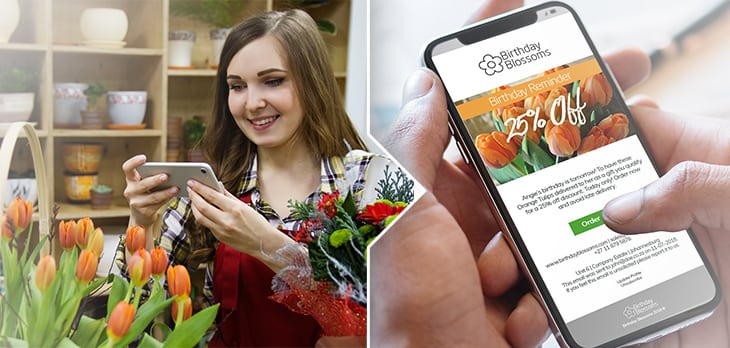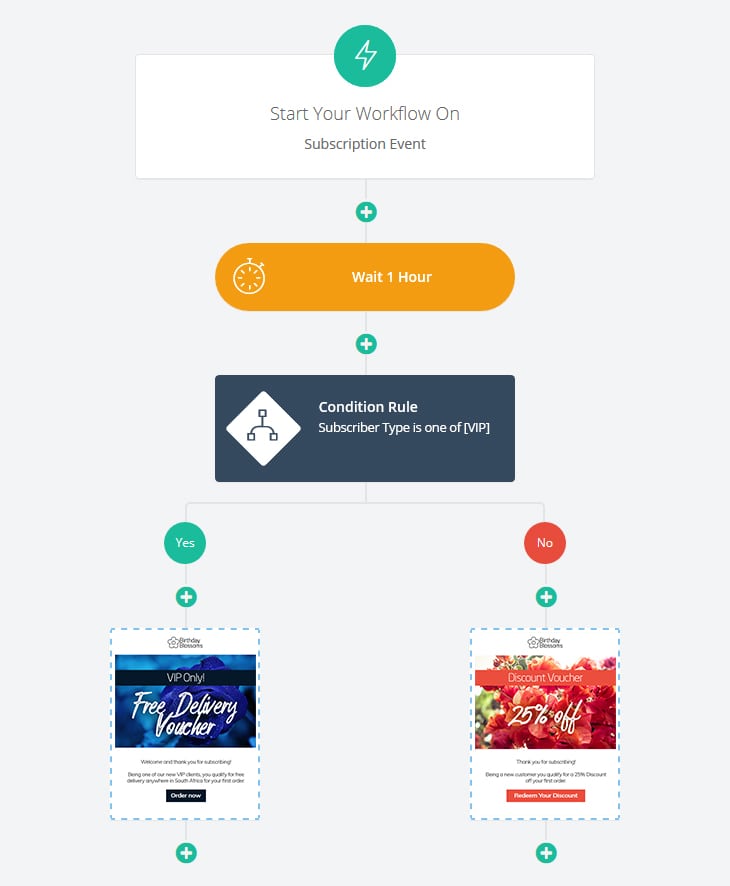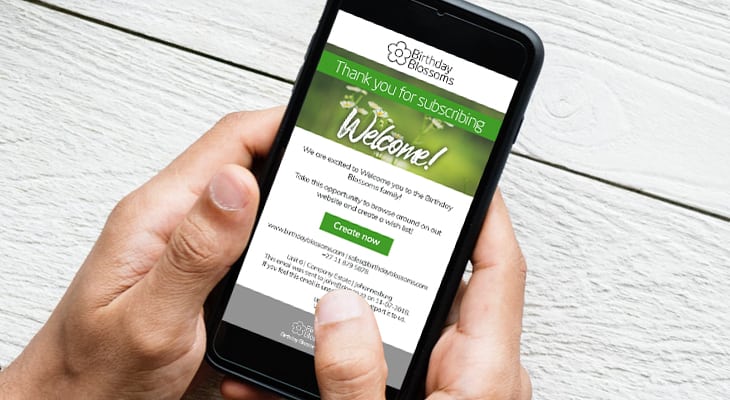Recently, we released your new favourite feature in marketing automation: Workflows.
Until now, drip campaigns have been the best-in-class when it comes to sending relevant content to readers. This is because they deliver pre-written messages at customisable intervals, triggered by things like subscription events, birthdays, anniversaries, and once-off start dates. A direct-marketing strategy like this is often used in lead nurturing campaigns, leading subscribers through the sales funnel, or to specific end goals.
Workflows, on the other hand, offer the benefits of drip campaigns, plus so much more.

What are Marketing Automation Workflows?
Like drip campaigns, workflows allow messages to go out at specific times and with strategic delays. But when combined with conditional triggers and smart database management, workflows can also send messages based on conditions like behaviour, location, or personal information; effectively adapting the email / SMS journey for different audiences.
Common condition types include:
- Gender: To send different emails to male and female readers
- Birth year: To target readers from different age groups
- Location: To send different offers to people in different areas
- Custom fields: To send based on custom info collected from subscribers

The true power of marketing automation workflows often depends largely on how well you manage, and how often you update, your database. Get started with collecting and maintaining your clients’ personal information with our Guide to Email List Hygiene.
What Marketing Automation Workflows Do
Workflows save you time, resources, and can increase sales with targeted messaging. In other words: not only will your subscribers receive personally relevant content that’s more likely to convert them into buyers, but they’ll get it in less time and with less effort from you.
The technology’s dynamic and customisable nature also means that you can use marketing automation workflows for a wide variety of purposes, including:
- Nurturing new leads
- Onboarding new customers
- Engaging with and upselling to existing customers
- Educational campaigns
Why Use Marketing Automation Workflows
The major benefit of using marketing automation workflows is that once they’re set up, they’re automatic. Your users will move from one node to the next according to the parameters and triggers you set up, keeping your leads and subscribers engaged while you focus on other business tasks.
Being highly personalised and automated, this also means that you deliver relevant content when your readers need it, with less risk for error.

Reporting on Marketing Automation Workflows
Once your workflow is active, you can view reports on how your subscribers interact with it. This shows you the actions, messages, and queued contacts in a workflow, as well as the delays between actions, and how many contacts each message has been sent to.
On a micro level, you can also access workflow node reports. These give you detailed information about specific nodes themselves as well as an individual contact’s journey through every node in your workflow, enabling you to track things like the:
- Date they entered the workflow
- Total number of emails and / or SMSs they received in the workflow
- Date they completed the journey (if applicable)
Reporting like this allows you to find and analyse areas for improvement, so you can tweak your workflow to meet your objectives.
In today’s Business-to-Human marketing landscape, creating meaningful connections with your subscribers is critical. Marketing automation workflows simplify the process for you end-to-end, enabling you to take your clients on personalised, relevant, and perfectly timed journeys automatically.
#winning












